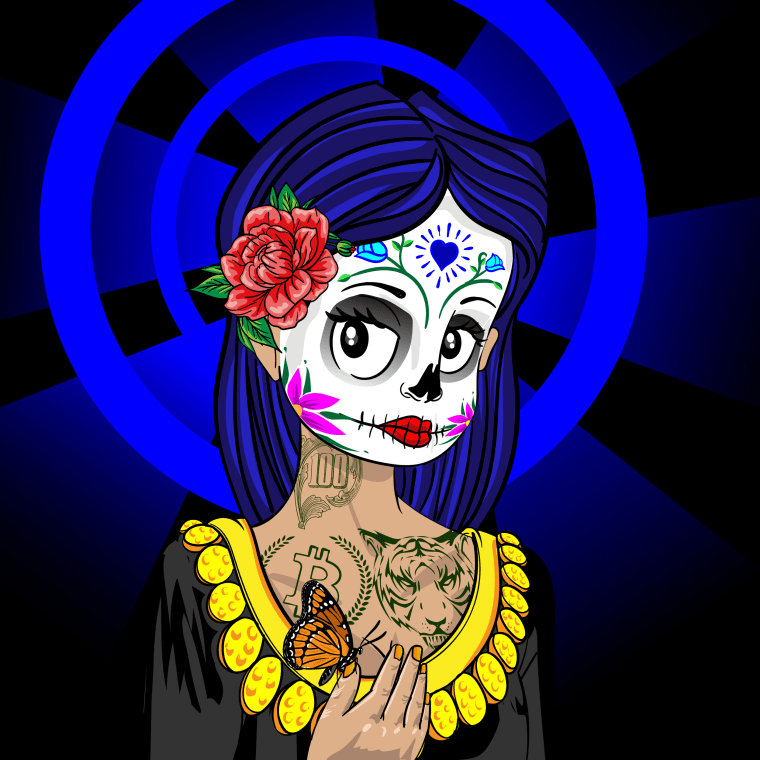01/11/2021 Celebrating Día de los Muertos with traditional altars — and NFTs?
Two Latinos are giving the venerated Mexican tradition a modern, cryptocurrency twist, with digital art that's transcending the way the Day of the Dead is celebrated.

The Mexican tradition of Día de los Muertos is usually celebrated with colorful ofrendas, or altars, that families create to honor their deceased loved ones. But two Latinos decided to mark — and market — the celebration in a new way.
With the boom in cryptocurrency and non-fungible tokens, or NFTs — unique digital assets that are similar to collectible trading cards —avid crypto investor David Galan, 40, saw a unique opportunity a few months ago to fill the NFT space with meaningful art inspired by Día de los Muertos.

A Day of the Dead NFT art piece inspired by La Catrina, an Aztec urban legend. Armando Parrilla
“We really wanted to do something that was different,” Galan said. “The reason we choose the Day of the Dead is that it means something to all of us.”
When Galan was 21, his father, Fernando Galan, died at age 50.
“What it means to be Mexican American was always very important for my father,” Galan said. “He’s always been there for me, regardless, ever since.”
Galan co-founded the Day of the Dead NFT project, a collection of 7,777 NFTs.The digital assets for the project feature art heavily inspired by La Catrina — the skull image derived from an Aztec legend that is popular in everything from food to clothing — that is prominent during Día de los Muertos celebrations.
He partnered with Armando Parrilla, 42, a graphic designer whose art is influenced by street culture from his upbringing in Southern California.
NFTs provide users with verifiable ownership of items such as videos, images, music and more. They are powered by blockchain technology, a database that records data in blocks and chains them together, making it difficult to be altered.
The ability to inject part of his Mexican heritage into this newer space attracted Parrilla to work with Galan and the rest of the team.
"To see people with our culture in this NFT space ... it's like, it's a chance. Is it breaking a barrier? Is it going to open doors for other artists from within our culture?" Parrilla said.
Parrilla said their Día de los Muertos digital art has been attracting a strong, growing following within their Discord community ahead of the NFTs' reveal on Monday and Tuesday.
A Day of the Dead NFT art piece inspired by La Catrina, an Aztec urban legend.Armando Parrilla
Those who celebrate Día de los Muertos believe that at midnight on Oct. 31, the souls of all deceased children come down from heaven and reunite with their families Nov. 1, and the souls of deceased adults visit Nov. 2.
The Día de los Muertos NFTs are only the first phase in what Galan, Parrilla and the rest of their team plan to create: an augmented reality world where users can visit virtual cemeteries that they can customize to honor their loved ones.
"This entire process has been really, really exciting," Galan said. "It's the influence and the fact that we're able to bring this culture, this beautiful thing that's part of our heritage, to the whole world."
 (0)
(0)
 (0)
(0)
https://www.nbcnews.com/news/latino/two-latinos-celebrate-di-de-los-muertos-nft-art-rcna4091
